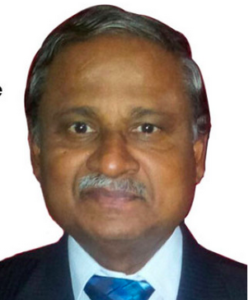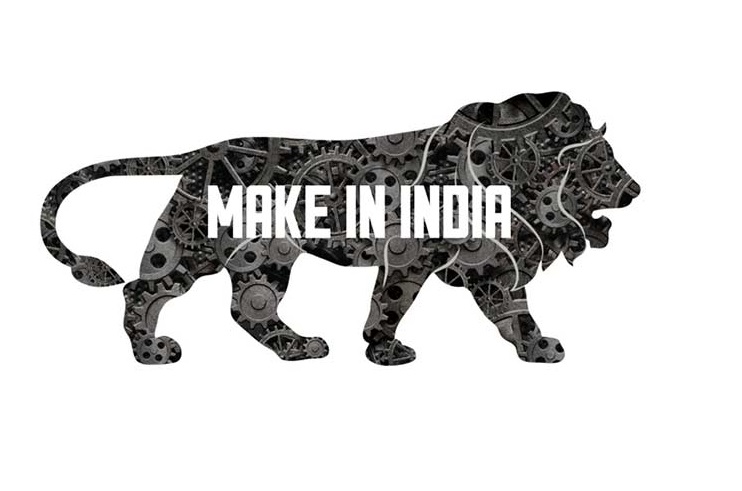The Make in India campaign launched by Prime Minister Narendra Modi is drawing mix reactions. Political parties, political analysts, businessmen, industrialists and social activists are articulating diverse opinions. But all said and done, ‘Make in India’ has moved far beyond the catch phrase to take concrete shape. Yet there are plenty of challenges and hurdles, which pose threat to this initiative.
This initiative is launched to give boost to different sectors like automobiles, chemicals, IT, pharma, textiles, engineering & manufacturing, aviation, railways, defense, renewable energy, mining, bio-technology, electronics, leather, tourism & hospitality etc. The initiative also aims to transform India from highly potential market to the powerhouse of manufacturing, thereby creating millions of job opportunities. In short the campaign is conceived and designed to achieve multiple objectives and far reaching impact on the economy.
Considering the intensity and multiplicity of this campaign, we need to study its challenges, and advantages, by segmenting it into different sectors. I, for instance, being an engineering professional would perceive and discuss only the challenges pertaining to manufacturing sector. When we talk about ‘Make in India’, we inevitably stumble upon ‘Made in India’, because for more than two decades from now; we have been striving to get recognition to Made in India products or brand India. There is one more angle. It is called ‘Made for India’. In my opinion all these three thoughts different qualities and dimensions. I think,
- Made in India’ is a pride,
- Make in India’ is the process, whereas
- Made for India’ is a compromise.
Obviously, the first two concepts are seen in a positive light, while the third one is viewed in the negative sense.
However, if the ‘Make in India’ has to succeed, we need to see the challenges and limitations in India. From this point of view, we need to acknowledge our present limitations in manufacturing:
We need to admit that India, from technological point of view is lagging behind the western world, as far as  manufacturing is concerned. Experts say, we are still about a decade behind advanced countries, when it comes to usage of technology and manufacturing excellence. But we can turn this situation in to our advantage. We can learn from the mistakes of the western world and try to adopt the best ever technology in the years to come. We have capabilities, we have set up and talent but we drag our own feet because of ‘chalta hein‘ attitude. It invokes complacency and limits our vision about quality and excellence.
manufacturing is concerned. Experts say, we are still about a decade behind advanced countries, when it comes to usage of technology and manufacturing excellence. But we can turn this situation in to our advantage. We can learn from the mistakes of the western world and try to adopt the best ever technology in the years to come. We have capabilities, we have set up and talent but we drag our own feet because of ‘chalta hein‘ attitude. It invokes complacency and limits our vision about quality and excellence.
Our thought about purchase or procurement is more or less ‘cost centric’ about technology rather than value conscious. Induction of any new technology involves significant capital investment. But focus is more about the thought, ‘Kitna deti hein’. Hence, more often than not in Indian Industry may enjoy the cost benefits but lose on value addition.
Some of advance countries have used this approach to introduce ‘made for India’ technology which has gone into oblivion in the advanced world, quite a few years ago. Therefore in every sector, we find mediocre quality products manufactured by them especially for the so called third world. The recent issue cropped up in connection with one of the major brands in food sector vindicates my contention. It is believed that the products by this brand for the US market are far different in nutritional values than those made for Indian market.
The following account goes on to substantiate my contention about ‘Made for India’ products or technology:
The famous European machinery manufacturer, in a bid to market his products, visited China. In a meeting with one of the Chinese buyer. He offered his machinery with standard features at a certain amount. The buyer asked about advanced features in order to make full optimum utilization of the machinery. The supplier pointed out that these features would be of no use to him, considering his present set-up and processes and more importantly, they would come at additional cost. Yet the supplier insisted to have them installed at extra cost. Thus the cost of machinery was increased by about 25%. Now the buyer asked for standard discount to which the European agreed to extend 10% discount. The buyer further asked that instead of giving discount, the supplier should provide best ever features and ensure that advanced features are fully made operational at customer’s end within a span of six months, with no extra cost. The deal was finalized, as the buyer was keen to utilize advanced machinery to optimum extent, in a very short span of time.
 Now let’s see the similar scenario in India. The same European manufacturer visited one of the Indian customers to sell his machinery. Similar discussions took place and the Indian buyer sought to have discount on the standard price. It was offered 10%. The buyer still bargained hard to obtain additional discount and after lot of negotiations, the supplier agreed for extra special discount. The buyer was happy that he had cracked the deal at a very low price and thus saved
Now let’s see the similar scenario in India. The same European manufacturer visited one of the Indian customers to sell his machinery. Similar discussions took place and the Indian buyer sought to have discount on the standard price. It was offered 10%. The buyer still bargained hard to obtain additional discount and after lot of negotiations, the supplier agreed for extra special discount. The buyer was happy that he had cracked the deal at a very low price and thus saved
company’s money. After the deal was finalized the supplier went back to Europe, retrieved the old drawings, which had long been archived 10-15 years back. In the bargain the machinery was received with very old features, which had become obsolete in Europe long before.
Moral of the story is simple. We try to bargain on cost instead of insisting for best features and in the process, lose on value. We get a momentary pleasure of saving the cost but in the long run, we stand to lose because we don’t add value to our investment
Usage of low cost technology often poses problems in terms of product quality, reliability, consistency and performance. Our delivery commitments are fired.
Many of us in India generally think that low investment means low manufacturing cost, which is utterly wrong. This conception is perhaps developed because we find lot of low cost Chinese products in the market. We look at their cost but overlook their inconsistency in performance, durability and quality. On the other hand, a Swiss company producing ball pen tips, uses best ever automation and manufacturing practices. Their manufacturing process runs unmanned, 24/7 unabated, 365 days a year. Still the company has been able to keep their manufacturing cost lowest in the world. This is because they have ignored the cost or investment and strived to deliver the value.
We have to challenge and change this scenario. We should be more demanding and insist for superior technology or superior quality, that is used elsewhere in the advanced world. Investment in such machinery, tooling or equipments may appear high but its results and returns will be incredibly quicker and higher.
 In many of the Indian industries, people insist for manual skill because they apprehend that adoption of advanced technology will result in redundancy of human resource, which is abundantly available in India. As such they resist the change and introduction of new technology. However, technology driven processes with minimum human intervention will guarantee manufacturing excellence.
In many of the Indian industries, people insist for manual skill because they apprehend that adoption of advanced technology will result in redundancy of human resource, which is abundantly available in India. As such they resist the change and introduction of new technology. However, technology driven processes with minimum human intervention will guarantee manufacturing excellence.
Make in India necessarily involves the drive to boost the manufacturing sector. However, the investors are wary of prevalent labor laws and bureaucratic hassles in India and as such, unless conducive atmosphere is created on these fronts the investments will not come as expected and Make in India drive will not accomplish desired results.
In order to make this initiative a great success, we need to be at par with the advanced world as far as usage of modern technology is concerned and we need to have more clarity, maturity and intensity on quality aspects of our products.
India’s youth population is both, a strength and threat. In order to bring the huge chunk of unemployed youth power in to employment stream, India needs to create millions of jobs every year. The new government, I believe, is aware of this fact and that’s why the Make in India is so earnestly launched by the Prime Minister. Most of the western countries and even China are rapidly ageing, whereas India will continue to remain young for next 2-3 decades. So the aging world will have to depend a lot on India. Therefore, Make in India is not a short term programme. It will be an ongoing process, irrespective of the fact that whichever government is in power, the drive has to continue with the same thrust. However, the threats or challenges discussed above need to be overcome.
About Author:
 Ashok Raj is the CEO of Euroclydon Technologies Pvt Ltd. that provides CAD, CAE & CAM software solutions along with Design/ Engineering services to the engineering industry. He holds 38 years of extensive experience in manufacturing industry including over 25 years in machine tool sector. He has held senior positions in various organisations and was instrumental in setting up a ‘State-of-the-art’ Machine shop for a leading Automation & robotic system manufacturer. He convened in Pune the ‘E- Manufacturing Technology’ event, which seeks to provide the key to success in ‘Make in India’ movement.
Ashok Raj is the CEO of Euroclydon Technologies Pvt Ltd. that provides CAD, CAE & CAM software solutions along with Design/ Engineering services to the engineering industry. He holds 38 years of extensive experience in manufacturing industry including over 25 years in machine tool sector. He has held senior positions in various organisations and was instrumental in setting up a ‘State-of-the-art’ Machine shop for a leading Automation & robotic system manufacturer. He convened in Pune the ‘E- Manufacturing Technology’ event, which seeks to provide the key to success in ‘Make in India’ movement.
Lead image source: www.makeinindia.com


